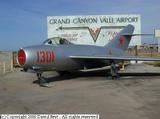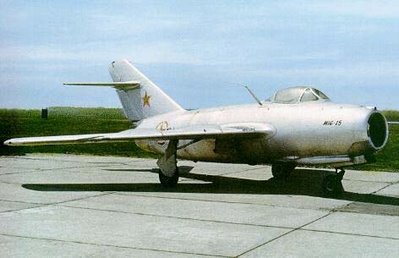





Mikoyan Gurevich MiG-15 Fagot
Warbird Tech Series, Volume 40
By Yefim Gordon and Peter Davison
Reviewed by Ned Barnett
(Review Copy provided by Specialty Press)
The MiG-15 was, by any measure, a revolutionary aircraft. In a single standing-start leap, the MiG-15 took Soviet technology out of the piston-era dark ages and into the forefront of transonic technology. Faster, higher flying and more maneuverable than it’s chief Korean War protagonist, the F-86, the MiG-15 was handicapped in Korea primarily by the relative skill of it’s pilots, when compared to USAF fighter jocks, many of whom had fought in combat in the Second World War. In the proper hands, the MiG-15 was a world-beater – heavily-armed, sleek and remarkably reliable.
There are many books on the MiG-15 on the market – I’ve read many of them – but if you want a solid one-volume assessment of this ground-breaking fighter aircraft, Specialty Press’s new book is the one you want to buy and read. In 104 pages – 8 in color – this book takes you from concept to combat, and beyond. Every variant of the MiG-15 is covered here in full and satisfactory detail. Modelers will enjoy the brief review of available MiG-15 kits (those on the market in 2004 when the book was written), as well as pages of detail photos, line-drawings, scale profiles and crisp, clear and insightful technical explanations.
As a “conversion nut,” I especially appreciated the chapter on MiG-15 variations, including the little-known SP-1 all-weather interceptor, the MiG Design Bureau’s answer to the F-86D Sabre Dog radar interceptor. The SP-1’s nose radar bullet looks an awful lot like the spinner from a World War II Hawker Typhoon – or perhaps a Lancaster or Mosquito – suggesting that a convincing conversion would be a relative piece of cake. Other modifications include use of British-style wing-hugging “slipper” drop tanks – another easy and distinctive conversion.
This book also has just enough color to convince modelers that not all MiG-15s are silver-doped or all-metal aircraft. The People’s Republic of China and the Polish Air Force both used extensive multi-colored camouflage, and these are illustrated in this book as well. However, the real strength can be found in the detailed photos and sketches, which make the MiG-15 come to life – for the historian and for the modeler.
While the MiG-15 is best known for its role in Korea, the plane flew with dozens of foreign countries, giving most of them their first taste of modern transonic jet fighter aircraft. It gave birth to the similar-looking MiG-17, which proved itself to still be combat-capable in the skies over North Vietnam – even when fighting double-sonic F4 Phantom IIs – nearly two decades after the MiG-15’s debut over Korea.
With text, photos and drawings, this book tells the MiG-15’s story in concise and illuminating detail. If you even think you might want to know more about the MiG-15, get this book. You won’t be sorry.
No comments:
Post a Comment